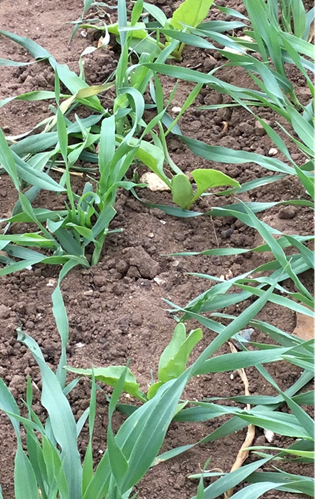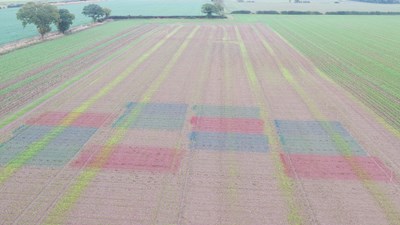In order to manage virus yellows in the future, and reduce our dependence on man-made pesticides BBRO has launched a new strategy* to investigate how we can manage aphids in a more natural fashion. To do this we are thinking ‘ABCD’ and will be investigating four major techniques:
A: Attractants
The use of alternative hosts species to pull migrating winged aphids away from sugar beet. It is established that our main aphid threat, Myzus persicae, the peach-potato aphid, has a preference for brassicas or potatoes instead of sugar beet. We will soon be looking at whether we can integrate strips of these alternative species into sugar beet species to pull aphids away from, and stop them migrating through, sugar beet fields. BBRO has effectively used strips of oilseed rape and radish within our virus yellows varietal tolerance trials since 2019. However, we need to see how this can be done commercially and economically.
B: Beneficials
Investigate how we can encourage natural populations of beneficial insects into sugar beet crops by offering suitable habitats, such as wild flower strips, in and around sugar beet fields. We are also undertaking evaluations of deploying commercially available beneficial insect products, widely used in horticulture, outdoors and on a broad-acre scale.

C: Camo-cropping
Reducing the plant-soil contrast is a known method to prevent aphids from colonising plants. Manipulating this contrast can camouflage crops in plain sight from the aphids and we are looking at two distinct methods to achieve this.
Cereal camo cropping
Utilising a cereal crop is widely used to prevent wind blow damage to sugar beet when it is immature. In 2020, during the last major VY epidemic, it was widely seen that crops that were protected with a cereal (often barley) showed reduced virus symptoms. This year we ran our camo cropping campaign to encourage growers to join in and help us work out if this can be a viable option for limiting aphid pressure. We will conduct assessments on camo-cropped fields in the autumn to see if this offers a viable option.

Field Dyes
Introducing a competitive species alongside the sugar beet can lead to significant competition for resources and yield loss. Therefore, we are also looking at how we can reduce the plant-soil contrast in any other ways. We have been trialling fabric dyes to do this and will continue looking at any other product which can be applied to disguise the sugar beet. These dyes have been applied to trial plots ahead of the expected migration of aphids into crops and any impact on yield and reduction in VY symptoms will be monitored in Autumn 2022.
D: Deterrents
Our final aspect is looking at using plant-based essentials oils to see if these can be applied to our sugar beet to repel winged aphids away from the crop. These trials will start in controlled, glasshouse conditions to screen a wide range of products before moving any possible candidates onto broad-acre investigations in future years.
Contact: Dr Alistair Wright – BBRO Crop Protection Scientist
Alistair.wright@bbro.co.uk 07920 792249

*Note: This research has been partially funded by Defra.




